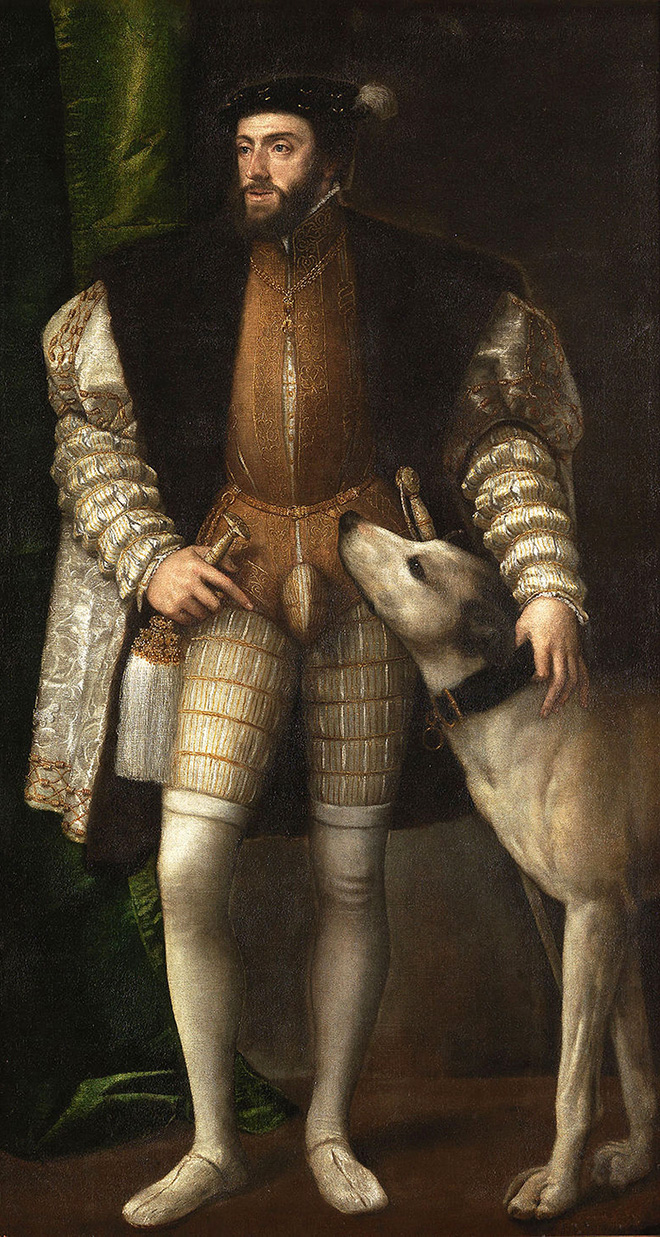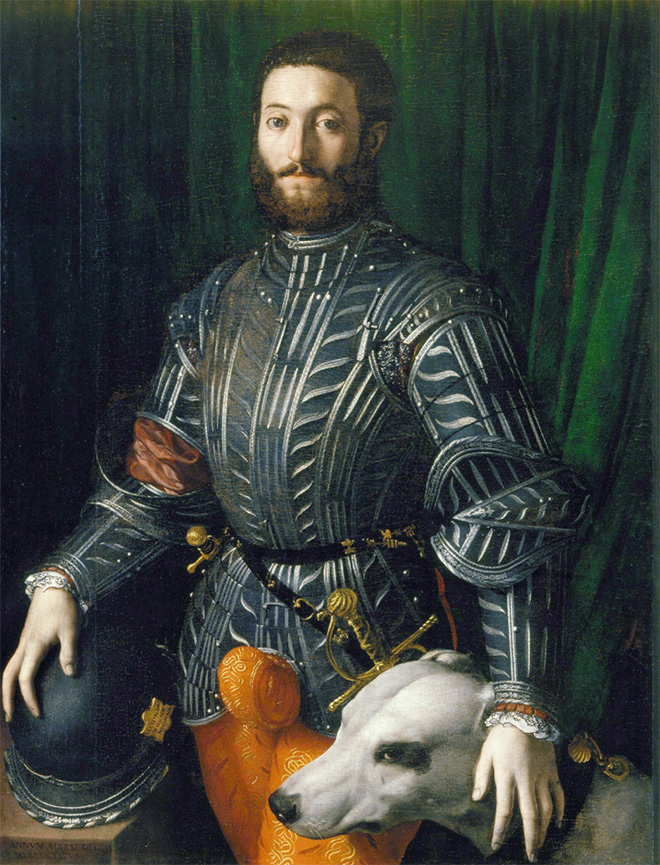The codpiece as a feature of male dress dates to the 15th and 16th centuries during the renaissance. Designed to cover the gap between the two legs of men’s hose, it is packed and shaped to emphasize rather than disguise the genital area.
The origins of the codpiece lie in the triangle of fabric used to join the two separate hose legs in the late 15th century when doublets shortened. Soon padding was added and ended up as the codpiece–a prominent, suggestive shape filling the gap between the legs of the breeches.

It soon became a normal part of male clothing, in style across many countless and social levels until the end of the 1500s. Tailors became as creative with codpiece shapes as with other clothing details. The codpiece could hide a pocket or even be used as a pincushion.

With great size comes great decorative responsibility, and men of means rose to the occasion. They brocaded, damasked, bejewelled, embroidered, tasseled, tinseled, and otherwise ornamented their codpieces until they became like walking Christmas trees. Puberty was no prerequisite: boys as young as seven could engorge themselves with silk and satin.


Codpiece even found its way to warfare: suit of the king’s armor, boasting a bulbous codpiece weighing more than two and a half pounds, is still on display at the Tower.


By the close of the sixteenth century, the codpiece had become a canker-blossom on the male form, and it declined as suddenly as it had ascended.

If you enjoyed this educational post, you should will also take a look at violent rabbits depicted in medieval manuscripts and badly painted babies in renaissance art.




Larry Blackmon of Cameo fame wore the codpiece best.
Blackie Lawless’ flame thrower codpiece was better
The king’s codpiece would suggest he suffered from Peyronie’s disease.
I wonder what the women thought. I’m sure some got a good laugh out of it.
Maybe we should think what will future civilisations think of yoga pants, for instance.
It is a uniquely American tendency to mock the male form. Think of all the Speedo jokes.
Speedo? Speedon’t
One of the stupidest fashion trends in history. Worse than a mullet or speedos.
why tho
Yet another way for men to lie.
yeah now comparing size is a bit more symbolic